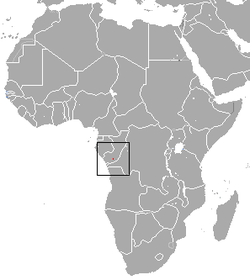| Adam's horseshoe bat | |
|---|---|
| Scientific classification | |
| Kingdom: | Animalia |
| Phylum: | Chordata |
| Class: | Mammalia |
| Order: | Chiroptera |
| Family: | Rhinolophidae |
| Genus: | Rhinolophus |
| Species: | R. adami |
| Binomial name | |
| Rhinolophus adami Aellen & Brosset, 1968 | |
 | |
| Adam's horseshoe bat range | |
Adam's horseshoe bat (Rhinolophus adami) is a species of bat in the family Rhinolophidae. It is endemic to Republic of the Congo. It roosts in caves.
